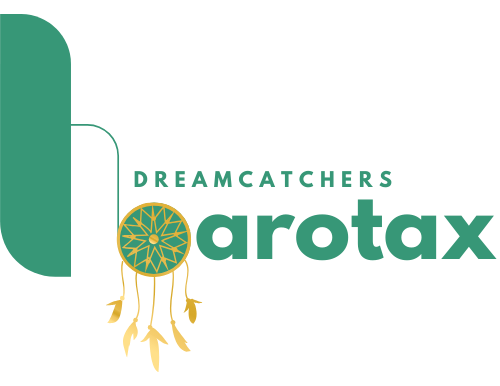Dreamcatchers
The Mystical Guardians of Dreams
Introduction
Dreamcatchers, with their intricate webs and delicate feathers, have captivated the imaginations of people around the world. Originating from Native American culture, these beautiful creations are believed to protect sleepers from bad dreams and negative energies. Over the years, dreamcatchers have evolved from cultural artifacts to popular decorative items, embodying a blend of tradition, spirituality, and artistry. This article delves into the rich history, cultural significance, and modern-day uses of dreamcatchers, exploring why they continue to be cherished by many.
Historical Origins
Native American Roots
The origins of dreamcatchers can be traced back to the Ojibwe (Chippewa) and Lakota tribes of Native Americans. According to Ojibwe legend, the Spider Woman, known as Asibikaashi, took care of the children and people of the land. As the tribe spread across North America, it became difficult for her to reach all the children. To help her, mothers and grandmothers wove webs of magical webs for the children, which had the power to catch bad dreams and allow only good dreams to pass through.
Symbolism and Craftsmanship
Traditionally, dreamcatchers were made from natural materials like willow hoops, sinew, and feathers. The hoop represents the circle of life, while the web symbolizes protection. Each part of the dreamcatcher has specific meanings:
- Hoop: The circle signifies unity, the cycle of life, and the universe.
- Web: The web is designed to trap bad dreams, preventing them from disturbing the sleeper.
- Feathers: Feathers act as a soft ladder, allowing good dreams to gently descend onto the sleeper.
Cultural Significance
Spiritual Protection
Dreamcatchers are deeply embedded in Native American spirituality. They are often used as talismans to ward off evil spirits and negative energies. The belief is that bad dreams get caught in the web and dissipate with the first light of dawn, while good dreams slide down the feathers to reach the sleeper.
Cultural Identity and Heritage
For Native American tribes, dreamcatchers are more than just decorative objects; they are symbols of cultural identity and heritage. They represent the wisdom and teachings passed down through generations. Making dreamcatchers is often a communal activity, fostering a sense of unity and shared cultural pride.
Modern-Day Popularity
Global Appeal
In recent decades, dreamcatchers have transcended their cultural origins to become popular decorative items worldwide. They are often seen hanging in homes, cars, and offices. This global appeal can be attributed to their aesthetic beauty and the universal desire for protection and positive energy.
Variations and Adaptations
As dreamcatchers have become more mainstream, they have also evolved in design. Modern dreamcatchers often incorporate a variety of materials, colors, and embellishments, catering to diverse tastes. Some are adorned with crystals, beads, and even LED lights, making them unique pieces of art.
Making a Dreamcatcher
Materials Needed
Creating your own dreamcatcher can be a rewarding experience. Here are the basic materials you will need:
- Hoop (wooden, metal, or plastic)
- Suede lace or yarn
- String or sinew
- Beads and feathers
- Scissors and glue
Step-by-Step Guide
- Wrap the Hoop: Begin by wrapping the hoop with suede lace or yarn. Secure the end with glue or a knot.
- Create the Web: Tie one end of the string to the hoop and start weaving the web by looping the string around the hoop. Continue weaving, creating a web pattern. You can add beads as you weave to enhance the design.
- Add Feathers and Beads: Once the web is complete, tie feathers to the bottom of the hoop. You can also add beads to the strings attached to the feathers.
- Finishing Touches: Trim any excess string and make sure all knots are secure. Your dreamcatcher is now ready to hang.
Dreamcatchers in Popular Culture
Art and Fashion
Dreamcatchers have found their way into various forms of art and fashion. They are featured in paintings, tattoos, jewelry, and clothing. This widespread use in contemporary art and fashion highlights their enduring appeal and versatility as symbols of beauty and protection.
Symbolism in Media
In movies, television shows, and literature, dreamcatchers are often used to symbolize protection and the quest for inner peace. They are depicted as mystical objects that hold the power to influence dreams and safeguard the soul.
Ethical Considerations
Cultural Appropriation
As dreamcatchers become more popular outside of Native American culture, it is important to consider the ethical implications. Cultural appropriation occurs when elements of one culture are used by another culture without permission, often leading to the commodification and misrepresentation of the original culture. To avoid cultural appropriation, it is essential to respect the origins and significance of dreamcatchers and support authentic Native American artisans.
Supporting Indigenous Artisans
One way to honor the cultural significance of dreamcatchers is by purchasing them from Native American artisans. This not only ensures that you are getting an authentic piece but also supports the preservation of cultural heritage and provides economic benefits to indigenous communities.
Conclusion
Dreamcatchers are more than just beautiful decorations; they are deeply rooted in Native American culture and spirituality. They serve as protectors of sleep, symbols of cultural identity, and pieces of art that have captured the hearts of people worldwide. Whether you are drawn to their aesthetic appeal, spiritual significance, or cultural heritage, dreamcatchers continue to be a powerful symbol of protection and positive energy. As you hang a dreamcatcher in your home, remember the rich history and cultural significance it carries, and let it inspire you to appreciate the beauty and wisdom of diverse traditions.



